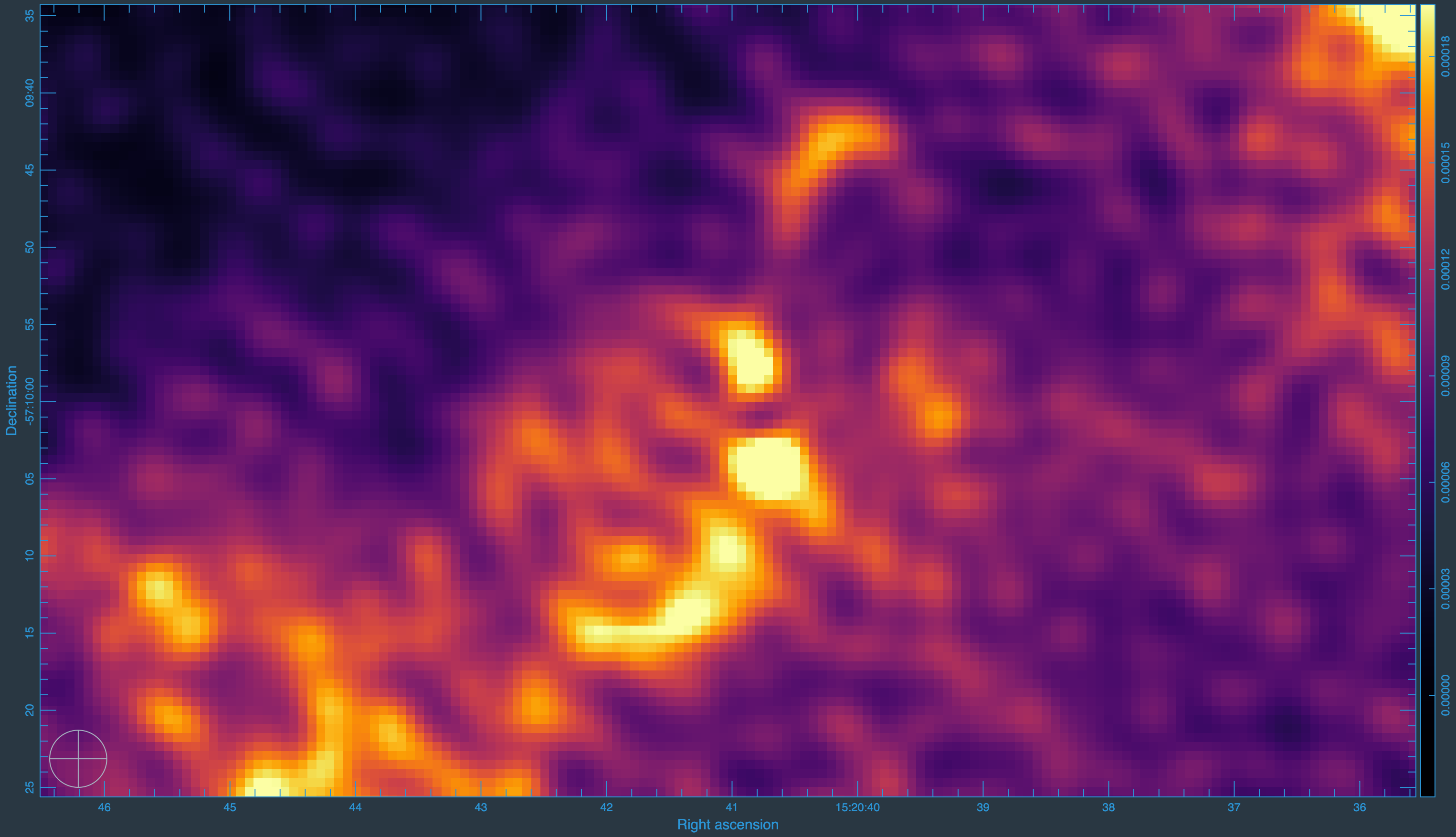Astronomers have spotted a neutron star whose jet is changing direction for the first time. Likened to a garden sprinkler, the jet is coming from the phenomenal object Circinus X-1, one of the brightest and best-studied objects in the X-ray sky. However, it turns out that there is a lot more to discover about this object.
Circinus X-1 is a binary system. It comprises a neutron star, the extremely dense remains of a star going supernova, orbited by a companion star from which it steals material. Some of that material is pushed away from the system in the form of powerful jets. These jets are commonly seen around black holes but Circinus X-1 was the first neutron star seen to have jets, back in 2007. Curiously, now it’s been observed that the jet is not going straight.
Circinus X-1 is such a well-studied source in our field, but it still remains such a puzzle even after 50 years of people looking at it.
Fraser Cowie
The interaction between the rotating star and the disk of material creates a precession. Just like a spinning top slowing down, the direction in the rotation of the neutron star and its jet point is changing. This motion makes the jet look like a garden sprinkler or even a gymnast’s ribbon.
“[The research] is really exciting because Circinus X-1 is such a well-studied source in our field, but it still remains such a puzzle even after 50 years of people looking at it,” Fraser Cowie, from the University of Oxford who presented the new research, told IFLScience. “Now we have managed, with our new observations, to shed a bit more light on why it is so puzzling and see even more features. We are starting to link the various puzzling things together in a more unified picture.”

Radio image of the S-shaped precessing jet launched by the neutron star in Circinus X-1.
Image Credit: Fraser Cowie
The observations were taken by the MeerKAT telescope in South Africa. Recent upgrades, which improve the sensitivity and resolution of radio observations, allowed the researchers to see the details of Circinus X-1’s jet, which is how the S-shaped structure was discovered.
The accretion of material onto the neutron star is an extremely energetic process. Neutron stars are so dense that a teaspoon of material weighs as much as Mount Everest. As material falls onto these extremely dense objects, it can release the energy of a million Suns in a single second. Some of that energy will push away part of the infalling material into the jet.
The jet is moving at velocities comparable to the speed of light. It slammed into the material surrounding this binary system creating termination shocks. It’s moving so fast that interacting with the interstellar medium creates shockwaves.
These termination shocks are moving at 10 percent of the speed of light. So it must have been caused by the jets. Winds, even from neutron stars, are not that energetic. This is the first time that termination shocks have been observed around an X-ray binary.
” We are still taking observations with MeerKAT every week. We can do two things with that. We can stack all the images together and look for even fainter new structures. Or we can start to look at how the source is changing with time,” Cowie told IFLScience about the current work. Circinus X-1 will be followed up in multiple wavelengths leading to a more comprehensive picture of the system.
The research was presented at the National Astronomy Meeting on July 15, 2024.
Source Link: Neutron Star Spotted Shooting A Jet Like A Garden Sprinkler For First Time